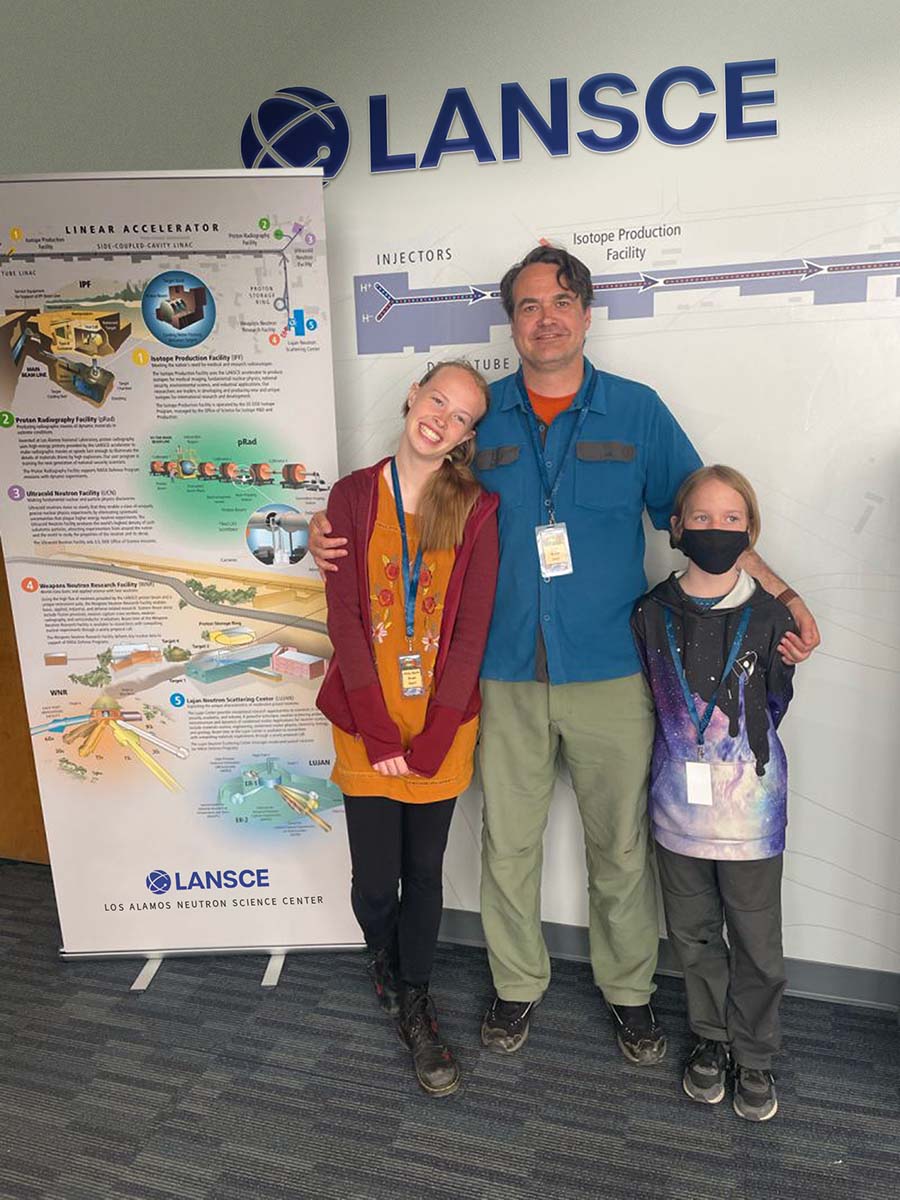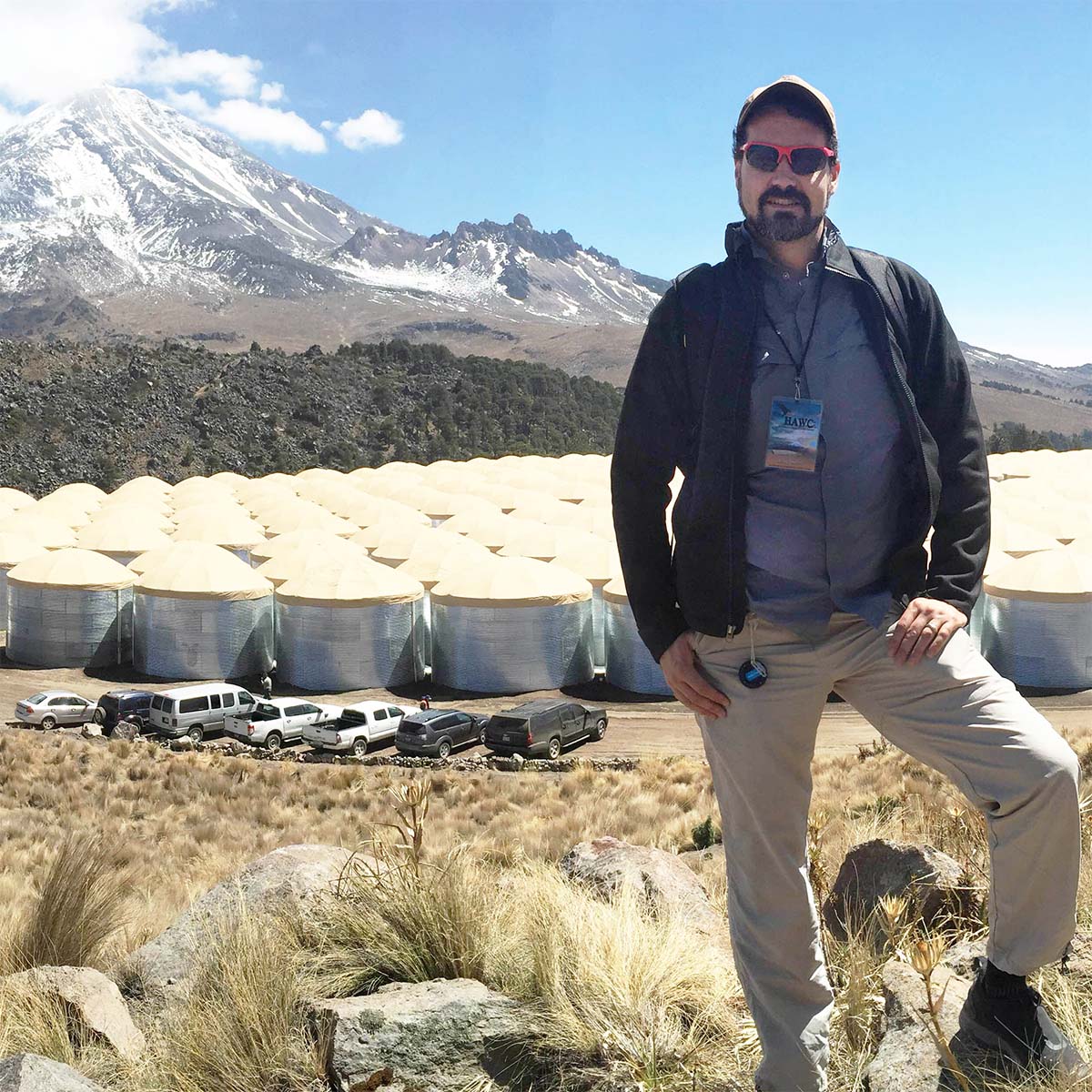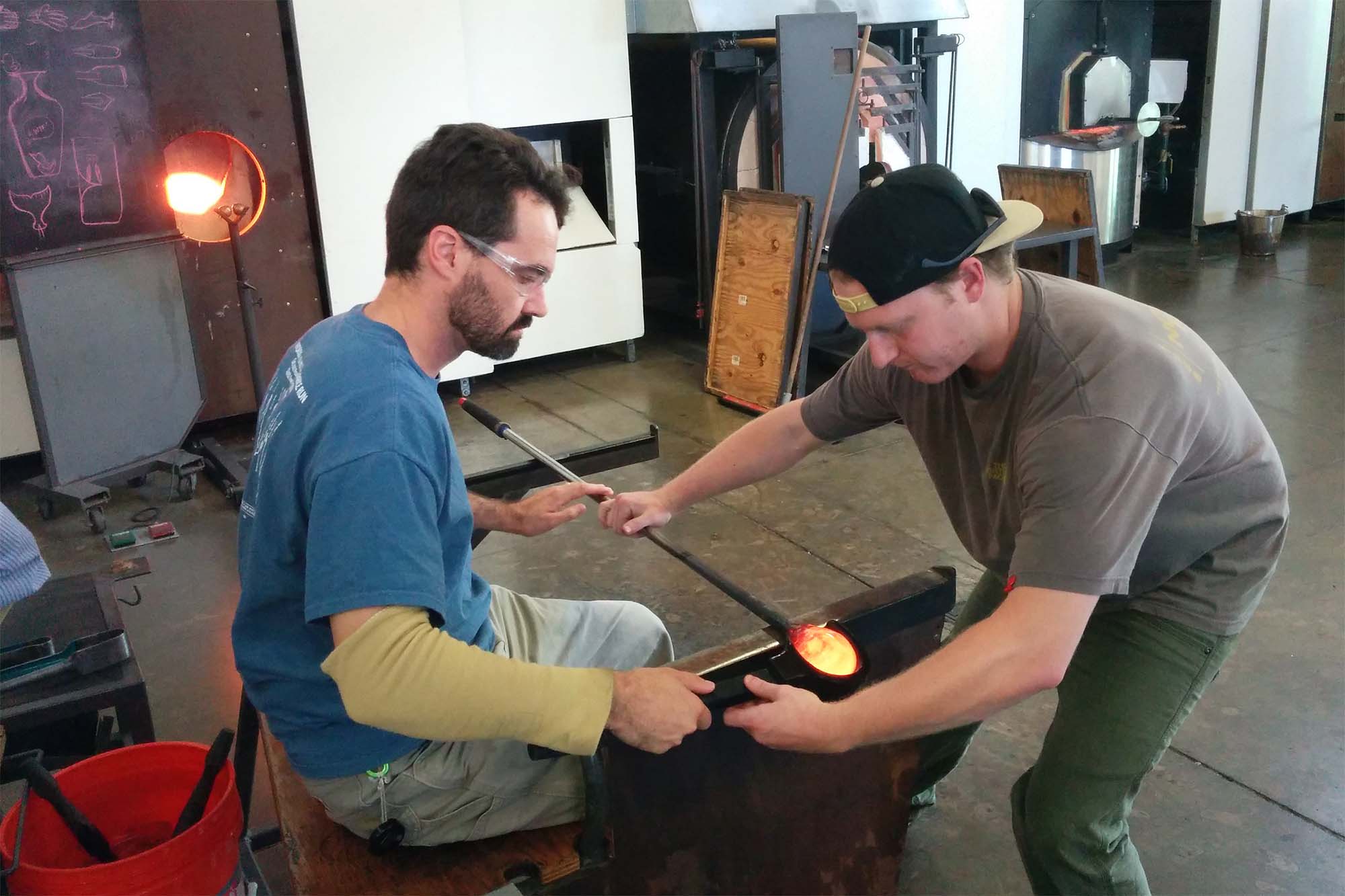Reviving a Giant: Eric Brown Leads LANSCE into the Future
Meet a key player in a billion-dollar upgrade that promises to extend the life—and impact—of Los Alamos’s iconic proton accelerator.
- Kyle Dickman

Download a print-friendly version of this article.
On a reliably clear New Mexico morning in March, Eric Brown is busy fielding phone calls in his corner office, a short walk from the aging particle accelerator he’s helping reinvent. “We’re overdue for an upgrade,” he says. Brown is the User Facility Director for the Los Alamos Neutron Science Center, or LANSCE—a kilometer-long particle accelerator that, for the past half-century, has fueled groundbreaking research on the origins of the universe, life-saving isotopes, and the future of U.S. national security. Now, with Brown’s help, LANSCE is preparing for its most ambitious upgrade in decades.
“I’ve always had a foot in Science, Technology, and Engineering (STE) and a foot in Weapons,” Brown says, referring to the Lab’s two main directorates. He is solidly built with a five o’clock shadow. Today, like most days, he wears a pair of Levi’s 501 jeans and projects the unflappable air of the veteran ski patroller that he is—someone used to operating under pressure. “To me, the most impactful work at the Lab has always been in service of both STE and Weapons,” he says. In that way, Brown’s a lot like LANSCE: existing where the line blurs between basic science and national security research, while strengthening both.

A fellow of both the American Physical Society and the Society of Experimental Mechanics, Brown sums up his day job as “keeping LANSCE running.” But the task has become increasingly difficult. This year, LANSCE turned 53, and though the user facility has never been in higher demand, the accelerator is showing its age. Last year, unplanned maintenance resulted in LANSCE being able to provide beam—meaning, accelerated protons—to only around half of the scheduled experiments across its five user facilities: the Isotope Production Facility (IPF), the Lujan Neutron Scattering Center, the Proton Radiography Facility (pRad), the Ultracold Neutron Center (UCN), and the Weapons Neutron Research Facility (WNR).
The LANSCE Accelerator Modernization Project (LAMP), is a multi-year, billion-dollar effort to fix these maintenance issues. Over the next seven years, the accelerator’s front end—where protons originate and begin their acceleration—will be entirely rebuilt to bring the facility in line with modern accelerators. If all goes to plan, science disruptions will be minimal. Achieving that, Brown says, “means preparing for inevitable breakdowns while steering one of the Lab’s most significant infrastructure investments in decades.” It’s a job he’s well-suited to.

Brown came to Los Alamos by happy coincidence. Near the end of his PhD program at the University of Illinois Urbana-Champaign where he studied self-healing materials, he ran into a visiting Lab physicist who was wandering the halls looking for a former colleague. That chance encounter, which resulted in the physicist’s invitation to tour Los Alamos, sparked the start of his career. Brown, who has always prioritized interdisciplinary and applied work, turned down positions in academia and industry to come to the Lab. “It was a no-brainer,” he says. “If you want to do something here, someone has the equipment and the know-how. The collaborative possibilities are incredible.”
Brown has now been at Los Alamos for 20 years. Early in his career, he became familiar with LANSCE through the Lujan Center, which uses neutron scattering to study material behavior. There, Brown used a one-of-a-kind detector to study polymer phase changes to help answer questions that, two decades later, are still relevant today. “We won a defense program award of excellence for that work,” he says, pointing toward a single frame on an office wall that’s wallpapered with framed awards. Also there, a glass paperweight he spun himself and two dozen coffee mugs, each representing a different project he’s worked on over his career. “HAWC in Mexico, dark matter in Canada, an underground experiment in South Dakota designed to study neutrinoless double-beta decay,” he says. “I’ve had a lot of fun here.”

Brown began transitioning from science to management not long into his career. From 2007 to 2009, he worked at the Pentagon, managing the Joint Munitions Program (JMP) for the Department of Defense and the Department of Energy, experience that helped equip him for his current position by teaching the politics of science. “Before D.C., I was publishing a paper a month,” says Brown. “But managing portfolios across the National Nuclear Security Administration and the Department of Defense taught me how to sell big science: how to tie data and science to the mission and policy objectives of program managers.”
He also contributed to the Nuclear Posture Review, a process that changes between presidential administrations and determines the role nuclear weapons play in national security. Through that experience, Brown made key contacts with administrators that, more than a decade later, helped secure funding for LAMP. That period also provided visceral reminders of the immediacy of LANSCE science. “All the science I’d done at LANSCE up until then was really impacting weapons that I hoped would never get used,” Brown says.

During that time, he recalls warfighters who had lost limbs in Iraq or Afghanistan visiting the Pentagon. Their vehicles had been hit by improvised explosive devices. After those visits, Brown facilitated a materials study at LANSCE’s pRad that led to stronger vehicle armor that was deployed in both conflicts. “That study was inherently saving warfighter lives,” Brown says. “That was very applied—very near term.”
Capabilities like pRad, WNR, and the Lujan Center, Brown explains, allow scientists to push the state-of-the-science faster and more precisely than traditional post-mortem approaches to materials science. “Instead of just looking at a hole in steel and guessing what happened,” he says, gesturing toward a steel plate on his wall with an explosive-created hole in its center, “we can observe the phenomena that caused it. That helps us improve armor and explosives in real time—and understand how to defeat them.”

Now, Brown’s focus is ensuring this kind of work continues at LANSCE well into the future. This afternoon, Brown is heading out for back-to-back trips. First to southern California to secure a multiyear supply of klystrons—radio-frequency amplifiers that are required to accelerate LANSCE’s protons and tend to break. “The manufacturer is a boutique operation. We’re the only users of those klystrons, and seven broke the last year we ran at 800 MeV,” he says, referring to the accelerator’s full power of 800 megaelectron volts. The klystrons he’s securing on this trip should keep LANSCE operational for the next few years. After California, he’s off to D.C. to make the case to program managers that LANSCE’s billion-dollar upgrade is a smart and necessary investment into the future of science and national security.
“We’re working hard to ensure that LANSCE is resilient today,” Brown says, “and for decades to come.”
People Also Ask:
- What’s a klystron and why does it matter for particle acceleration?
A klystron is a specialized vacuum tube that amplifies high-frequency radio waves. In particle accelerators like the Los Alamos Neutron Science Center (LANSCE), which was built with 1960s-era technology, klystrons generate the radiofrequency power needed to accelerate protons to near-light speeds. Think of a klystron as the engine that pushes particles forward—without it, the beam can’t reach full speed.








